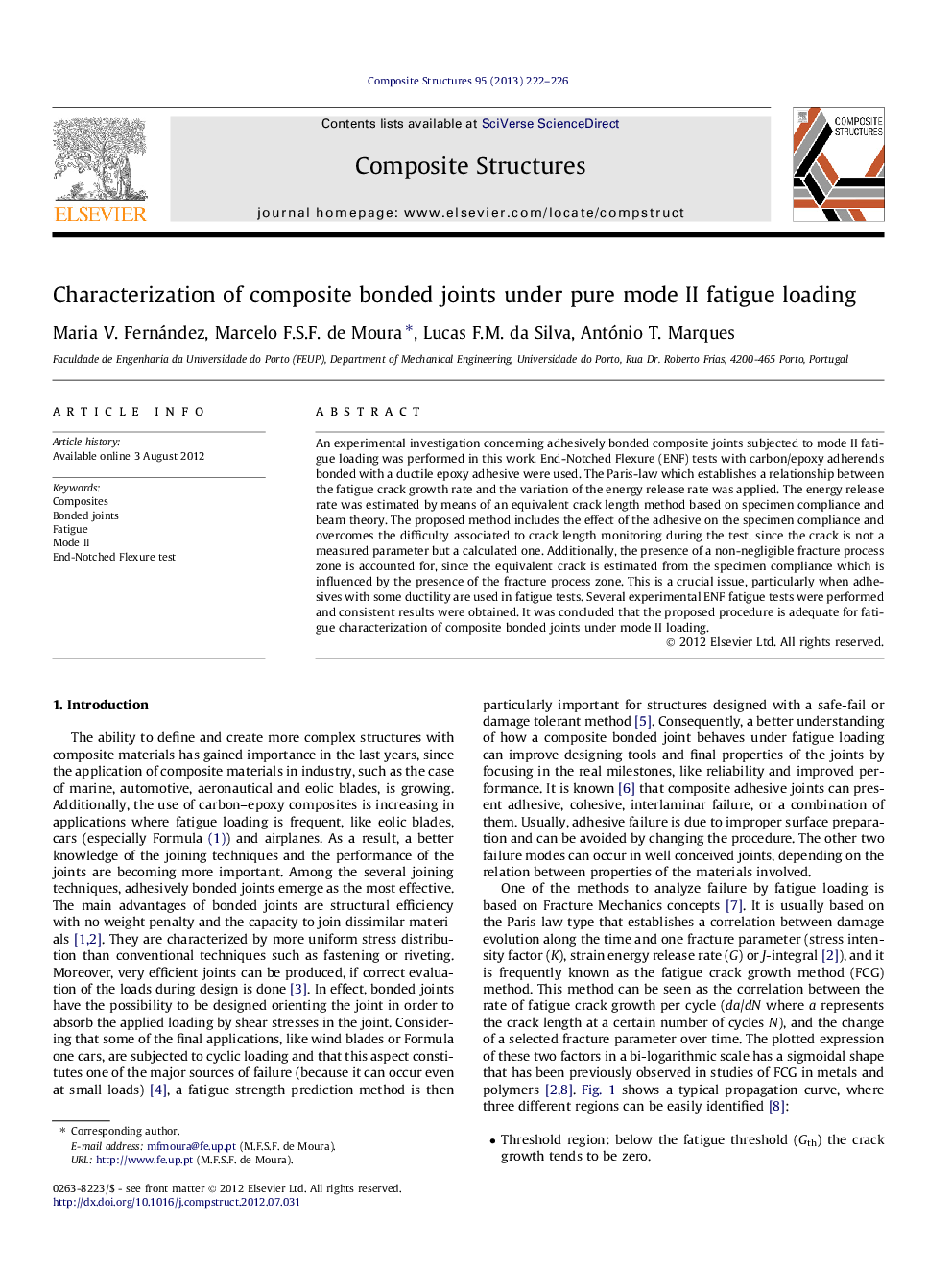| Article ID | Journal | Published Year | Pages | File Type |
|---|---|---|---|---|
| 252152 | Composite Structures | 2013 | 5 Pages |
An experimental investigation concerning adhesively bonded composite joints subjected to mode II fatigue loading was performed in this work. End-Notched Flexure (ENF) tests with carbon/epoxy adherends bonded with a ductile epoxy adhesive were used. The Paris-law which establishes a relationship between the fatigue crack growth rate and the variation of the energy release rate was applied. The energy release rate was estimated by means of an equivalent crack length method based on specimen compliance and beam theory. The proposed method includes the effect of the adhesive on the specimen compliance and overcomes the difficulty associated to crack length monitoring during the test, since the crack is not a measured parameter but a calculated one. Additionally, the presence of a non-negligible fracture process zone is accounted for, since the equivalent crack is estimated from the specimen compliance which is influenced by the presence of the fracture process zone. This is a crucial issue, particularly when adhesives with some ductility are used in fatigue tests. Several experimental ENF fatigue tests were performed and consistent results were obtained. It was concluded that the proposed procedure is adequate for fatigue characterization of composite bonded joints under mode II loading.
